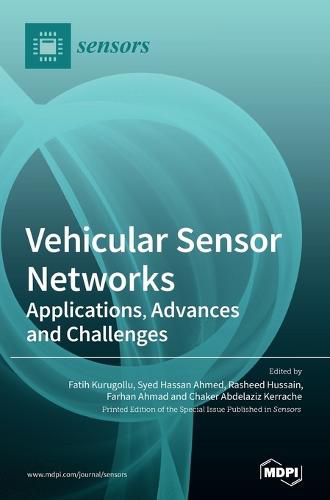Readings Newsletter
Become a Readings Member to make your shopping experience even easier.
Sign in or sign up for free!
You’re not far away from qualifying for FREE standard shipping within Australia
You’ve qualified for FREE standard shipping within Australia
The cart is loading…






This title is printed to order. This book may have been self-published. If so, we cannot guarantee the quality of the content. In the main most books will have gone through the editing process however some may not. We therefore suggest that you be aware of this before ordering this book. If in doubt check either the author or publisher’s details as we are unable to accept any returns unless they are faulty. Please contact us if you have any questions.
The recent years have witnessed tremendous growth in connected vehicles due to major interest in vehicular ad hoc networks (VANET) technology from both the research and industrial communities. VANET involves the generation of data from onboard sensors and its dissemination in other vehicles via vehicle-to-everything (V2X) communication, thus resulting in numerous applications such as steep-curve warnings. However, to increase the scope of applications, VANET has to integrate various technologies including sensor networks, which results in a new paradigm commonly referred to as vehicular sensor networks (VSN). Unlike traditional sensor networks, every node (vehicle) in VSN is equipped with various sensing (distance sensors, GPS, and cameras), storage, and communication capabilities, which can provide a wide range of applications including environmental surveillance and traffic monitoring. VSN has the potential to improve transportation technology and the transportation environment due to its unlimited power supply and resulting minimum energy constraints. However, VSN faces numerous challenges in terms of its design, implementation, network scalability, reliability, and deployment over large-scale networks, which need to be addressed before it is realized. This book comprises 12 outstanding research works related to vehicular sensor networks, addressing various aspects such as security, routing, SDN, and NDN.
$9.00 standard shipping within Australia
FREE standard shipping within Australia for orders over $100.00
Express & International shipping calculated at checkout
This title is printed to order. This book may have been self-published. If so, we cannot guarantee the quality of the content. In the main most books will have gone through the editing process however some may not. We therefore suggest that you be aware of this before ordering this book. If in doubt check either the author or publisher’s details as we are unable to accept any returns unless they are faulty. Please contact us if you have any questions.
The recent years have witnessed tremendous growth in connected vehicles due to major interest in vehicular ad hoc networks (VANET) technology from both the research and industrial communities. VANET involves the generation of data from onboard sensors and its dissemination in other vehicles via vehicle-to-everything (V2X) communication, thus resulting in numerous applications such as steep-curve warnings. However, to increase the scope of applications, VANET has to integrate various technologies including sensor networks, which results in a new paradigm commonly referred to as vehicular sensor networks (VSN). Unlike traditional sensor networks, every node (vehicle) in VSN is equipped with various sensing (distance sensors, GPS, and cameras), storage, and communication capabilities, which can provide a wide range of applications including environmental surveillance and traffic monitoring. VSN has the potential to improve transportation technology and the transportation environment due to its unlimited power supply and resulting minimum energy constraints. However, VSN faces numerous challenges in terms of its design, implementation, network scalability, reliability, and deployment over large-scale networks, which need to be addressed before it is realized. This book comprises 12 outstanding research works related to vehicular sensor networks, addressing various aspects such as security, routing, SDN, and NDN.